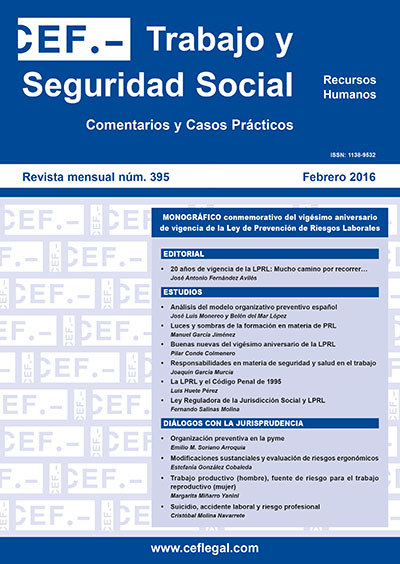Lights and Shadows of training on prevention of occupational risks: Critical balance and keys to reform
DOI:
https://doi.org/10.51302/rtss.2016.2028Keywords:
training, prevention of occupational risks, preventive cultureAbstract
The regulation on the prevention of occupational hazards has a subjective dimension of fundamental social right to protection of personal integrity, which is not only a right to freedom, but also the provision that requires a number of specific actions to be taken by other public and private, to guarantee the effectiveness of the subject.
In this sense, the Law on Prevention of Occupational Risks led, on the one hand, to strengthen the understanding of contractual protection by bringing about the employer's duty to integrate the prevention activities within their employment duties; and on the other, creating a new «market» in terms of training professionals. Thus, training in prevention of occupational risks the shapes as one of the core elements that make up that duty and, in turn, as one of the axial axis of the fabric of protection of health of the person.
In these terms, the present study addresses the one hand, the right and duty of training of workers in safety and health at work, and on the other, the formation of persons in charge or prevention professionals. This, because not only focusing on the situation that is currently the subject, but the challenges are highlighted in the Spanish Strategy on Safety and Health at Work 2015-2020, and in which ones in our opinion, there are still pose a certain and decisive manner by all those involved in this field.


















